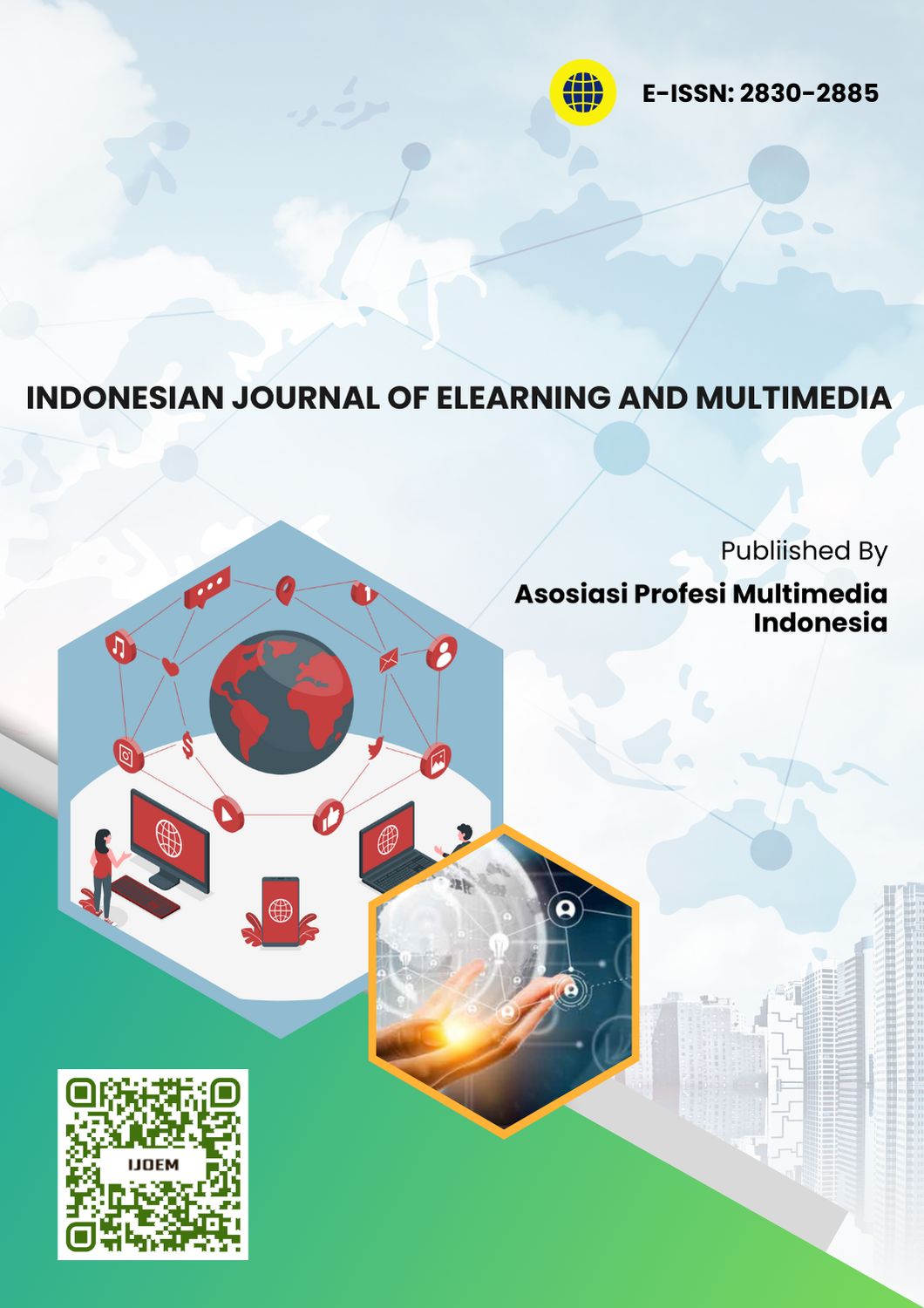Design and Building of an Automatic Water Filling System on Water Container Media Based on Arduino Esp8266
Main Article Content
Abstract
In the era of rapidly developing technology, innovation is important to facilitate human life. Water is the main need for all living things, especially humans, so it needs to be managed efficiently. Water filling in reservoirs is usually still done manually, which can cause a waste of clean water. Manual water filling requires humans to control the pump as needed. However, it often happens to forget to turn off the pump after the reservoir is full, which can cause a waste of water and electrical energy. To solve this problem, the idea is to make an automatic system with Arduino ESP 8266 called "Design of Automatic Water Filling System on Arduino ESP 8266 Based Water Reservoir". This system uses ultrasonic sensors to measure the water level in the reservoir. When the water reaches a certain level, the system will activate the water filling, and the user can monitor the water level in real time through a mobile device. This research aims to design and test this automatic water replenishment system to avoid water waste. The result is expected to be an efficient solution better than the manual system and beneficial in clean water management. This research will answer important questions about this system's design, workings, and test results. The main conclusion of this research is the need for improvements in the design and implementation of automatic water filling systems. Further analysis, adjustments, and retesting are needed to overcome the obstacles encountered.
Downloads
Article Details
Copyright (c) 2024 Alfazri Putra Pradana, Nur Aminudin, Fahlul Rizki, Dwi Feriyanto

This work is licensed under a Creative Commons Attribution-ShareAlike 4.0 International License.
References
Agustanti, S. P., Hartini, H., Nurhayani, N., & Hartanto, D. D. (2022). Aplikasi Mikrokontroler Arduino Uno Dalam Rancang Bangun Kunci Pintu Menggunakan E-Ktp. Jusikom : Jurnal Sistem Komputer Musirawas, 7(1), 74–88. https://doi.org/10.32767/jusikom.v7i1.1611
Ajreen, M. (2021). Based Temperature and Humidity Mointoring System Using Aurdino Uno and ESP8266 WiFi Module. SSRN Electronic Journal, 1–6. https://doi.org/10.2139/ssrn.3918308
Ardiyanto, A., Arman, & Supriyadi, E. (2021). Alat Pengukur Suhu Berbasis Arduino Menggunakan Sensor Inframerah Dan Alarm Pendeteksi Suhu Tubuh Diatas Normal. Sinusoida, 23(1), 11–21. https://doi.org/10.37277/s.v23i1.1016
Chowdhary, P., Bharagava, R. N., Mishra, S., & Khan, N. (2020). Role of Industries in Water Scarcity and Its Adverse Effects on Environment and Human Health. Environmental Concerns and Sustainable Development, 235–256. https://doi.org/10.1007/978-981-13-5889-0_12
Darnita, Y., Discrise, A., & Toyib, R. (2021). Prototype Alat Pendeksi Kebakaran Menggunakan Arduino. Jurnal Informatika Upgris, 7(1), 3–7. https://doi.org/10.26877/jiu.v7i1.7094
Fani, H. Al, Sumarno, S., Jalaluddin, J., Hartama, D., & Gunawan, I. (2020). Perancangan Alat Monitoring Pendeteksi Suara di Ruangan Bayi RS Vita Insani Berbasis Arduino Menggunakan Buzzer. Jurnal Media Informatika Budidarma, 4(1), 144–149. https://doi.org/10.30865/mib.v4i1.1750
Firmansyah, R., Yusuf, M., Saputra, P. P. S., Prasetyo, M. E., Mochtar, F. M., & Kurniawan, F. A. (2020). IoT Based Temperature Control System Using Node MCU ESP 8266. In International Joint Conference on Science and Engineering (IJCSE 2020) (Vol. 196, pp. 401–407). https://doi.org/10.2991/aer.k.201124.072
Holovatyy, A. (2021). Development of IoT Weather Monitoring System Based on Arduino and ESP8266 Wi-Fi Module. In IOP Conference Series: Materials Science and Engineering (Vol. 1016, pp. 1–10). https://doi.org/10.1088/1757-899x/1016/1/012014
Kasonga, T. K., Coetzee, M. A. A., Kamika, I., Ngole-Jeme, V. M., & Momba, M. N. B. (2021). Endocrine-disruptive chemicals as contaminants of emerging concern in wastewater and surface water: A review. Journal of Environmental Management, 277, 1–10. https://doi.org/10.1016/j.jenvman.2020.111485
Kondaveeti, H. K., Kumaravelu, N. K., Vanambathina, S. D., Mathe, S. E., & Vappangi, S. (2021). A systematic literature review on prototyping with Arduino: Applications, challenges, advantages, and limitations. Computer Science Review, 40, 1–28. https://doi.org/10.1016/j.cosrev.2021.100364
Lukman, R., Fernando, Y., & Jayadi, A. (2023). Perancangan Alat Pakan Bebek Otomatis Terjadwal Berbasis Arduino Uno Dengan Penjadwalan Android. Jurnal Informatika Dan Rekayasa Perangkat Lunak, 4(1), 10–21. https://doi.org/10.33365/jatika.v4i1.2454
Mufida, E., Adriansyah, M. I., Ihsan, N. M., & Anwar, R. S. (2021). Perancangan Alat Pendeteksi KWH Meter Berbasis Arduino Uno R3 dan ESP8266. INSANtek: Jurnal Inovasi Dan Sains Teknik Elektro, 2(1), 28–34. https://doi.org/10.31294/instk.v2i1.442
Putra, A. T., & Risfendra, R. (2021). Penggunaan Aplikasi Ubidots untuk Sistem Kontrol dan Monitoring pada Gudang Gula Berbasis Arduino UNO. JTEIN: Jurnal Teknik Elektro Indonesia, 2(1), 40–48. https://doi.org/10.24036/jtein.v2i1.120
Roid, F., Aulia, R., & Muthalib, M. A. (2023). Perancangan Alat Perekam Data Penggunaan Energi Listrik Pada KWH Meter Untuk Rumah Tinggal 4 Ampere Berbasis Arduino Uno. Jurnal Teknik Elektro Dan Komputasi (ELKOM), 5(1), 85–94. https://doi.org/10.32528/elkom.v5i1.9170
Saravanan, A., Kumar, P. S., Jeevanantham, S., Karishma, S., Tajsabreen, B., Yaashikaa, P. R., & Reshma, B. (2021). Effective water/wastewater treatment methodologies for toxic pollutants removal: Processes and applications towards sustainable development. Chemosphere, 280, 1–15. https://doi.org/10.1016/j.chemosphere.2021.130595



 Alfazri Putra Pradana
Alfazri Putra Pradana
